The Silence of the Lambs Blu-ray Movie
HomeThe Silence of the Lambs Blu-ray Movie 
Metro-Goldwyn-Mayer | 1991 | 119 min | Rated R | Mar 03, 2009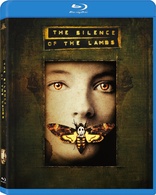
Movie rating
8.8 | / 10 |
Blu-ray rating
| Users | 4.2 | |
| Reviewer | 4.0 | |
| Overall | 4.0 |
Overview
The Silence of the Lambs (1991)
An FBI trainee enlists the help of an infamous Serial killer, to gain insight into the mind of another killer.
Starring: Jodie Foster, Anthony Hopkins, Scott Glenn, Ted Levine, Anthony HealdDirector: Jonathan Demme
| Drama | 100% |
| Thriller | 95% |
| Crime | 79% |
| Horror | 75% |
| Psychological thriller | 74% |
Specifications
Video
Video codec: MPEG-2
Video resolution: 1080p
Aspect ratio: 1.85:1
Original aspect ratio: 1.85:1
Audio
English: DTS-HD Master Audio 5.1 (48kHz, 24-bit)
Spanish: Dolby Digital 5.1 (448 kbps)
French: Dolby Digital 5.1 (448 kbps)
Thai: Dolby Digital 2.0
Subtitles
English SDH, Spanish, Cantonese, Korean, Mandarin (Traditional), Thai
Discs
50GB Blu-ray Disc
Single disc (1 BD)
Bonus View (PiP)
Playback
Region free
Review
Rating summary
| Movie | 5.0 | |
| Video | 3.5 | |
| Audio | 3.5 | |
| Extras | 3.5 | |
| Overall | 4.0 |
The Silence of the Lambs Blu-ray Movie Review
This winner of multiple Oscars is a necessary addition to any Blu-ray library.
Reviewed by Martin Liebman March 26, 2009Believe me, you don't want Hannibal Lecter inside your head.
Add one to the number of films now available on Blu-ray that boast of multiple Oscar wins, including
Best Picture. The Silence of the Lambs not only swept the major categories at the 1991
Academy Awards, but it stands as one of the most deserving of all the Best Picture winners in the
81-year history of the Award. Earning a total of seven nominations and leaving with five statues,
the film is something of an atypical major-category, multiple-Oscar winner in that it is a film heavily
influenced by and containing many elements of true Horror filmmaking. The majority of Best
Picture winners fall squarely into the Drama genre, and while The Silence of the Lambs
does offer all the earmarks of a good Drama, there is no doubt that its dark atmosphere, terrifying
characters, and grisly visuals dominate the film. While that sounds like it could describe most
better-than-average Horror pictures, The Silence of the Lambs seals the deal
with the plethora of A-list talent in front of, and behind, the camera, each delivering a Herculean
effort that makes The Silence of the Lambs arguably the best Horror film of all time.
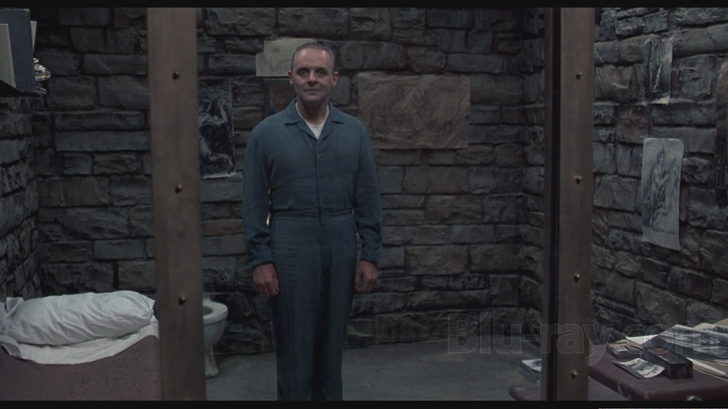
Welcome to Hannibal's. May I take your liver, er, order please?
FBI trainee Clarice Starling (Jodie Foster, Nim's Island) is given a big break when she is assigned to interview and construct a psycho-behavioral profile of the deranged killer, Hannibal "The Cannibal" Lecter (Anthony Hopkins, Nixon). Starling assumes correctly that her assignment is more than she is told, and she enters into a brief battle of wits with the clever and manipulative Lecter, who finally surrenders to her a clue that may lead her down a path towards catching the notorious killer "Buffalo Bill." When Bill kidnaps the daughter of a prominent U.S. Senator, Lecter's knowledge of the killer becomes central to the investigation. His budding rapport with Starling leads him to agree to a deal that may ease the harsh restrictions placed on him as one of the world's most infamous criminals in exchange for sharing his knowledge of the Buffalo Bill case, assuming the kidnapped girl is recovered alive.
Based on the novel by Thomas Harris, The Silence of the Lambs is a story about a descent into hell, into both the deepest, darkest and most unforgiving crevices of both the Earth and of the human psyche. Hannibal Lecter is housed in a crude, unforgiving, windowless cell that offers roughly-textured stone walls, a filthy toilet, sink, and cot, and an impenetrable clear window that offers him no access to the outside world beyond his cage, the man denied even the bars that allow a criminal's hands and arms to experience brief moments of reprieve outside containment. Access to the cell is through rather plain and unassuming corridors and stairwells, until visitors are greeted by a harsh red light and a subtle yet foreboding rumble that signals the entrance into one of the world's most unforgiving prisons. Buffalo Bill's abode, like the hallways and staircases that lead to Lecter's cell, is ordinary and modest. Behind the pedestrian appointments of his living room and kitchen lies a labyrinthine, crude, musty, and inhospitable path towards both depravity and certain death, the grisly location ending at a deep, dark, and impossibly steep pit where the innocent await their deaths at the hands of a man as psychotic as perhaps any the world has ever known. Indeed, each locale suits its inhabitant and the themes of the film; Lecter and Bill are equally though differently deranged, Lecter in a smooth and almost unassuming intellectual fashion and Bill showing less physical control, his emotional make-up perhaps at odds with his deeper psychological and physical depravity. Each man lives in an Earthly representation of hell, and each man's mind, too, in their own unique way, exist almost in another plane of existence where reason, compassion, and morality no longer figure into the human condition.
Director Jonathan Demme (The Manchurian Candidate) and Cinematographer Tak Fujimoto (The Sixth Sense) smartly frame The Silence of the Lambs around a plain, unassuming visual style that reinforces the themes of depravity and the superficial simplicity but deeper complexities of the story, Demme's direction earning him a Best Director Oscar. The film is consistently drab, visually, even on the surface and far away from either Lecter or Bill. Bleak, depressing, cold, and unforgiving, the film represents basic filmmaking at its best, conveying a simple story that is wonderfully disturbing, one that draws audiences into a world too frightening and stripped of humanity to endure first-hand, where only movie magic may suffice in leading audiences through a world so depraved as this. It's part escapist entertainment at its best, and part nightmare that is both horrific and riveting, one that is too finely constructed from which to warrant -- or desire -- interruption or reprieve. It takes audiences into a world that seems too grisly for most to comprehend, but does so both competently and assuredly, crafting along the way a tour into the darkest and most grotesque levels of humanity where cannibalism, murder, and the absence of even the most fundamental of human consciousness is absent.
The Silence of the Lambs offers audiences a first-rate story directed with precision and chilling effectiveness, but it is the performance of its pair of lead actors that makes the film the unmitigated classic it is, and will continue to be, for generations to come. Hopkins' performance is rare, one of the finest in the history of motion pictures, his a complete transformation not physically but rather emotionally and psychologically, the actor exuding all the qualities of the Lecter character, those both admirable and despicable. Hannibal is a fascinating villain, a highly educated man with an impeccable memory and vocabulary, an uncanny ability to manipulate others, and able to fully read and understand other human being completely and precisely. From identifying their preferred brands skin cream and perfume to describing, in detail, the personal histories of others after only the briefest of encounters, Lecter may be one of the smartest and most refined men in the world, a man of exemplary taste with only the nasty habit of consuming his fellow man standing between him and greatness. Clarice Starling is the perfect match for him. She lacks his physical stature, experience, and unsurpassed sense of the world around him that Lecter feasts on when toying with his captors, but she is astute and insightful in her own right, and more so than most. She is willing -- and able -- to stand toe-to-toe with Lecter not necessarily intellectually but psychologically. Jodie Foster is astounding in this role, playing it perfectly as she lends a sense of shaky confidence to the part. As fine as her performance is, however, it is devoured by Hopkins' gargantuan and career-defining effort. Both Hopkins and Foster earned Academy Awards for their performances.
The Silence of the Lambs Blu-ray Movie, Video Quality 
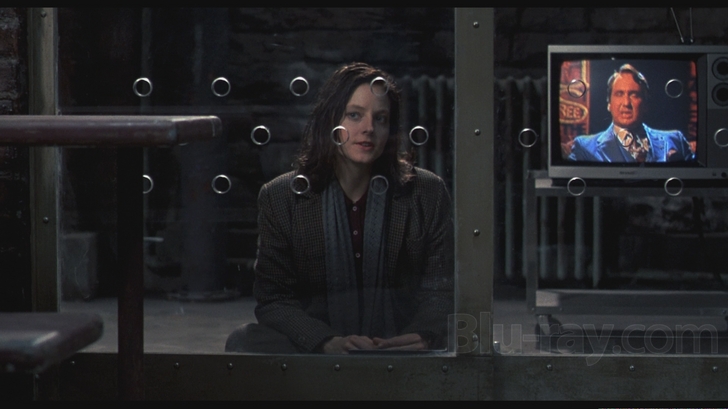
The Silence of the Lambs finally debuts on Blu-ray with an MPEG-2 encoded 1080p high definition transfer, presented inside a 1.85:1 frame. The image is fairly grainy, and black backgrounds generally see a spike in the level of visible noise. The film has a bleak, depressed look about it through much of the runtime, setting the tone for the feel of the film and the grisly characters that inhabit it. Colors, too, are slightly dulled in some scenes but a bit brighter in others. They are always stable and strong and never too harsh and overblown or underdeveloped. Fine detail is adequate but not stunning. The rough textures of Lecter's cell walls and the pit where Bill keeps his victims are fairly well defined, but there are no earth-shattering levels of fine detail seen here. Other objects look better under the right conditions, a tape recorder and several drawings seen in Lecter's Tennessee holding cell, for example, offer higher levels of visible detail than do those in darker, danker, grimier locales. Flesh tones look good throughout. Blacks, aside from seeing a rather heavy level of noise, are dark but not always deep and inky, and there is occasionally a slight loss of fine detail in the darker corners of the image. The Silence of the Lambs offers a bland visual style that will never sparkle on any format, and it is reproduced fairly well on this Blu-ray release.
The Silence of the Lambs Blu-ray Movie, Audio Quality 
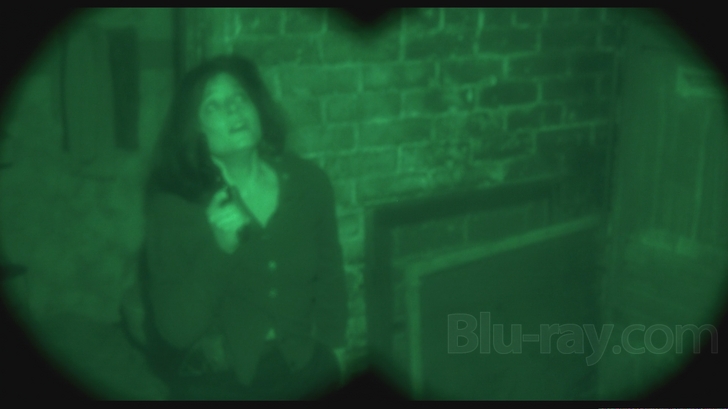
The Silence of the Lambs chews into Blu-ray with a stable but not overly impressive DTS-HD MA 5.1 lossless soundtrack. Music and effects sound slightly rough around the edges and somewhat undefined; the tussle in the prison after Starling's first meeting with Lecter, for example, features a ruckus from the prisoners who rattle their cages and beds while shouting obscenities, but it's never all that clear and pitch-perfectly defined in its presentation. Gunshots, heard primarily during training sessions at Quantico, are loud enough but seemingly lacking in the utmost clarity. Some sound effects move around the front of the soundstage with decent precision and clarity, speeding vehicles for example, which make for a bit of a reprieve from what is otherwise a front-heavy and dialogue-centric audio experience. In a film like The Silence of the Lambs, the audio presentation is meant to do little more than reinforce the story, and it does so admirably here. It's fine where it counts, offering strong dialogue reproduction, decent sound effects, and appropriately-placed and clearly-presented musical cues. None of it will push a sound system to its limits, but many viewers will likely be too enthralled in the story to notice what is a fairly lackluster sound presentation, though one that seems to stay in line with filmmaker intent.
The Silence of the Lambs Blu-ray Movie, Special Features and Extras 

The Silence of the Lambs features a nice array of bonus materials. Breaking the
Silence (480p, 1:58:37) is a picture-in-picture feature that runs intermittently over the
length
of the film, offering viewers text-based trivia and interview clips with primary members of the
cast
and crew as they recount their experiences in making this Academy Award-winning film.
Understanding the Madness (1080p, 19:35) takes viewers into the real world the
Behavioral Science Unit of the FBI and the work they conduct to solve crimes. Inside the
Labyrinth: Making of 'The Silence of the Lambs' (480p, 1:06:28) is a ten-year retrospective
look back at the film, beginning by examining the time in which the film was made and America's
obsession with serial killers, and moving on to look at the construction of some of the sets and
effects, the performances of
the cast, the praise and the criticism the film received after its release, and much more.
The
Silence of the Lambs: Page to Screen (480p, 41:17) is a piece hosted by Peter Gallagher and
examines how author Thomas Harris' chilling and grisly novel became one of the most respected
films of all time. It documents the actor's careers before the film, their foray into the world of the
FBI, their transformation from actor to character, and the film's and actor's post-release
successes and controversies. Scoring the Silence (480p, 16:00) features a look at the
contributions of Composer Howard Shore. Original 1991 'Making Of' Featurette (480p,
8:07) is a brief throwback piece that makes for a interesting watch insofar as seeing the
differences between the making-of features of then and now, but otherwise offers no
major information that was not revealed in the previous features. Next up are a series
of more than twenty deleted scenes (480p, 20:29), outtakes (480p, 1:46), and a
phone message from Anthony Hopkins (1080p, 0:34). Concluding the supplements are eleven
TV spots (480p, 5:55), a teaser trailer (480p, 1:05), and a theatrical trailer (480p, 1:49)
advertising the film.
The Silence of the Lambs Blu-ray Movie, Overall Score and Recommendation 
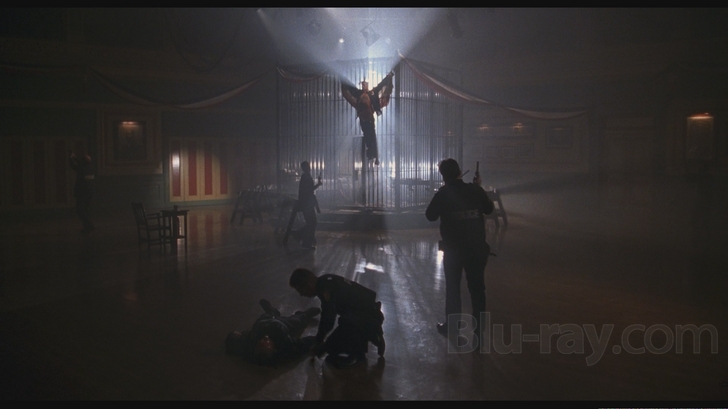
The Silence of the Lambs represents filmmaking and all that encompasses -- storytelling, acting, direction, pace, and thematic importance and structure, to name a few -- at its pinnacle. The film is a classic in the truest sense of the word, a picture that remains as intriguing, frightening, and compelling as ever thanks to its virtually flawless presentation, made possible by the contributions of top talent performing at their very best. MGM's Blu-ray release is a good one, but by no means a perfect one. The disc features an adequate video transfer that bests previous iterations of the film but fails to truly surpass them, though considering the film's inherent style, the transfer seen here seems a fine representation of the film's calculated appearance. Likewise, the soundtrack is sufficient but not stellar, though again, it seems in-line with the intended presentation. Finally, the disc is supported by a fine selection of bonus materials. Although the visuals and the accompanying soundtrack won't wow any Blu-ray viewers -- those both new to the format and those with several hundred titles under their belts -- the strength of the film and its place in cinematic history makes this disc a must-own. Highly recommended.
Other editions
The Silence of the Lambs: Other Editions

The Silence of the Lambs 4K
1991

The Silence of the Lambs
1991

The Silence of the Lambs
1991

The Silence of the Lambs
DVD Packaging
1991

The Silence of the Lambs
1991

The Silence of the Lambs w/ Halloween FP
1991

The Silence of the Lambs
San Diego Comic-Con 2013 Exclusive
1991

The Silence of the Lambs
Awards O-Ring Slipcover
1991

The Silence of the Lambs
MGM 90th Anniversary Edition
1991
Similar titles
Similar titles you might also like

Seven
Se7en
1995

Hannibal
2001

Insomnia
2002

Red Dragon 4K
2002

Regression
2015

Prisoners
2013

Cape Fear
1991

Funny Games
2007

The Tall Man
2012

The Woman
2011

The Girl with the Dragon Tattoo
2011

Hannibal Rising
2007

Law Abiding Citizen
2009

Child of God
2013

Hannibal: Season One
2013

A Clockwork Orange 4K
1971

Funny Games
1997

Dog Eat Dog
2016

Saw III
Unrated Edition
2006

Saw II
Unrated Edition
2005